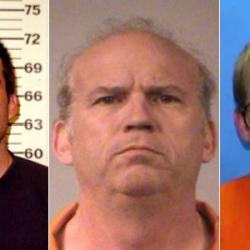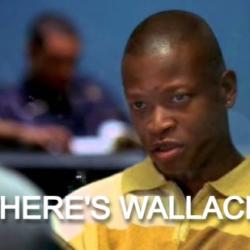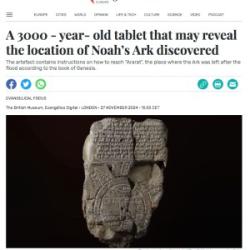Amy Sullivan returns to her thesis in TIME magazine, “The Origins of the God Gap.” Here’s the conclusion of that piece, which recalls the conclusion of dozens of other articles and blog posts from Sullivan:
Today, Democrats find themselves in an unusual situation, with a surfeit of faith-friendly front runners. If they want to court and keep new religious voters, however, this time the conversion will have to be party-wide.
This in a nutshell is Sullivan’s advice to Democrats: Winning elections means appealing to “religious voters,” and that requires “faith-friendliness” — whatever that means.
I don’t exactly disagree with this advice — electoral success usually requires not demonstrating disrespect for any large bloc of voters. But I can’t exactly agree with it either because I don’t think this so-called “God gap” is what Sullivan makes it out to be.
The gap she describes, first of all, is only a phenomenon in predominantly white churches. In predominantly black churches the voting gap is much, much wider, and it goes in the opposite direction. This is true even for most black churches that would fit a theological definition of “evangelical.” (As opposed to a cultural definition of evangelical. It could be argued that even something like the theologically evangelical Church of God in Christ wouldn’t fit such a cultural definition because, well, it’s not white.)
Sullivan would counter, I’m guessing, that this voting gap in the black churches is not specifically a matter of the particular religious perspective of those churches, or in any way particular to questions of religious faith at all. It is, rather, simply a reflection of the very wide and enduring partisan gap for all black voters.
But to make that case, Sullivan would have to explain why this sauce for the goose is not also sauce for the gander. She would need to demonstrate that the alleged “God gap” in white churches is the result of the parties’ respective “faith friendliness” and not merely a reflection of a broader cultural gap among white voters arising from the Southern Strategy begun by Richard Nixon and continued by Karl Rove.
That strategy is not focused exclusively at southern evangelicals, but southern evangelical culture is certainly part of what the Southern Strategy is geared toward. And with regard to southern evangelicals, the strategy has been an overwhelming success. From the televangelist empires of Falwell and Robertson to the southern/evangelical factions of the Baptist and Presbyterian denominations, the post-civil rights transfer of party allegiance is now complete. “We have lost the South for a generation,” President Johnson said after signing the Civil Rights Act of 1964. He was not wrong.
The southern-ness of much of American evangelicalism is clearly a factor in Sullivan’s “God gap.” This is a geographical reality and also a theological one. Evangelicalism’s otherworldly focus is a theological adaptation that arose to accommodate the awkwardly indefensible situation of white Christians “owning” Christian slaves (see “In the sweet by and by“). The largest single bloc of American evangelicals, the Southern Baptist Convention, was created in 1845 in defense of the principle that missionaries be allowed to own slaves. The history of many other evangelical institutions is rooted in a more recent expression of that same racism — as in the explosive growth of private Christian schools following Brown v. Board of Education.*
The partisan identity of these southern evangelical voters, in other words, has little to do with “faith friendliness” or with faith at all. If the Democratic Party adopted an anti-gay, anti-abortion platform and selected T.D. Jakes as its “faith-friendly” nominee, it still would not be able to overcome the partisan gap among certain southern strands of white evangelicalism.
If Sullivan wants to advise Democrats on how to reach out to that particular voting bloc, she’d be better off focusing on economics than on “faith-friendliness.” The divide-and-conquer southern strategy has worked long and hard to convince working-class white voters that they are in a zero-sum competition with non-white working-class voters (aided, unfortunately, by the predisposition of its target audience). Convincing them otherwise will likely involve even longer and harder work, but it is necessary work.
My agenda is somewhat different than Sullivan’s, so I tend to look at this less in terms of the strategic challenge it presents to Democratic candidates and more as a theological challenge for the church in America. Racism is a sin. That sin is woven into the fabric of American Christianity in general and American evangelicalism in particular. Canny politicians have been able to exploit that sin, but it is not primarily a political problem, and the responsibility for fixing it does not fall to any secular political party.**
Sullivan’s God gap holds true, of course, even within the large streams of American evangelicalism that stand apart from its southern roots. The midwestern strands of evangelicalism represented by Christianity Today or Wheaton College are just as pervasively partisan as the SBC and the other southern varieties of evangelicalism. Here I think the question of party loyalty comes down to one, and only one, thing: abortion. That will have to be the topic for another post.
– – – – – – – – – – – –
* Homosexuality and abortion are sometimes referred to as the “social conservative” agenda, but that term — “social conservative” — often also carries meanings that have nothing to do with genital politics, but rather with a desire to undo the civil rights movement. The conservative code-word “activist judges” refers not just to Roe v. Wade, but also to Brown. The Roberts Court has already begun delivering on both parts of this social conservative agenda.
** What is required, I think, is illustrated by Tony Campolo’s retelling of Clarence Jordan’s story about meeting a hillbilly preacher in the 1950s who oversaw a thriving, integrated congregation. Jordan asked the man how his church had grown so large and diverse:
The pastor smiled sheepishly and said, “Well, this church was down to a handful when the last preacher died. It was such a small congregation, they couldn’t get a new preacher nohow. They went on for a couple of months without anybody to give any sermons, so one Sunday I said to the head of the deacons that if they couldn’t get a preacher, I’d be willing to preach. So he let me! When I got in the pulpit, I just opened the Bible and put my finger down. It landed on that verse where Paul tells us that in Christ there is neither Jew nor Greek, bond nor free, male nor female. And so I preached about how Jesus makes us one and how once we’re in Christ, there should be no racial divisions between us. When the service was over, the deacons took me in the back room and they told me that they didn’t want to hear that kind of preaching no more.”
Clarence asked, “What did you do then?”
The old preacher answered, “I fired them deacons!”
“How come they didn’t fire you?” asked Clarence.
“Well, they never hired me,” the old preacher responded. … “Once I found out what bothered them people, I preached the same message every Sunday. It didn’t take much time before I had that church preached down to four!”












